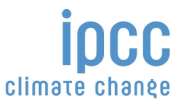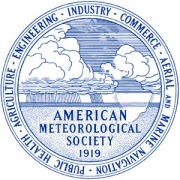Summary: the world has been warming for two centuries. Only the past few decades of that trend results primarily from our emissions of CO2. It’s a fact well-established in the climate science literature, but hidden by the news media — since it weakens the narrative.
It is a commonplace belief among laymen that the past two centuries of warming results from anthropogenic CO2 emissions. In fact the early warming constitutes a recovery from the Little Ice Age.
World CO2 emissions went ballistic after WWII, as shown in this DoE graph of estimated carbon emissions, and became a major driver of warming afterwards. That short period of anthropogenic-driven warming is why many scientists (eg, those cited in my post) discuss the statistical significance of the pause. This is clear in the climate literature, as seen in the studies below.
From the Department of Energy’s Carbon Dioxide Information Analysis Center
(1) A few of the many references by climate scientists
(a) Working Group I: The Physical Science Basis, IPCC Fourth Assessment Report: Climate Change 2007
.
Palaeoclimate model simulations are broadly consistent with the reconstructed NH temperatures over the past 1 kyr. The rise in surface temperatures since 1950 very likely cannot be reproduced without including anthropogenic greenhouse gases in the model forcings, and it is very unlikely that this warming was merely a recovery from a pre-20th century cold period.
Most of the observed increase in global average temperatures since the mid-20th century is very likely due to the observed increase in anthropogenic greenhouse gas concentrations. This is an advance since the TAR’s conclusion that “most of the observed warming over the last 50 years is likely to have been due to the increase in greenhouse gas concentrations”. Discernible human influences now extend to other aspects of climate, including ocean warming, continental-average temperatures, temperature extremes and wind patterns (see Figure SPM.4 and Table SPM.2). {9.4, 9.5}
It is highly likely that those human activities that have increased the concentration of greenhouse gases in the atmosphere have been largely responsible for the observed warmingsince 1950.
(c) An interesting article mention things seldom mentioned by our news media, least they ruin the narrative: “Provoked scientists try to explain lag in global warming“, Paul Voosen, Greenwire (energy & environmental news), 25 October 2011
John Barnes, Principal Investigator at the Mauna Loa Observatory, NOAA:
“If you look at the last decade of global temperature, it’s not increasing,” Barnes said. “There’s a lot of scatter to it. But the [climate] models go up. And that has to be explained. Why didn’t we warm up?”
John Daniel, a researcher at the Earth System Research Lab of the NOAA:
“We make a mistake, anytime the temperature goes up, you imply this is due to global warming. If you make a big deal about every time it goes up, it seems like you should make a big deal about every time it goes down.”
Ben Santer, climate scientists at Lawrence Livermore National Laboratory:
“All of these things contribute to the relative muted warming. The difficultly is figuring out the relative contribution of these things. You can’t do that without systematic modeling and experimentation. I would hope someone will do that.”
By Greg Holland (Director, Earth System Laboratory) and Cindy Bruyere,
National Center for Atmospheric Research (NCAR), February 2012
National Center for Atmospheric Research (NCAR), February 2012
From the Abstract:
A number of studies have assumed that anthropogenic climate change has occurred as a quasi-linear warming trend from around the turn of the 20th century and related this to potential changes in other parameters, such as weather systems and their extremes. However, we shall argue, using a comparison of Global Climate Model (GCM) simulations with and without anthropogenic forcing (following IPCC AR4) that the net anthropogenic forcing was indistinguishable from natural variability until the late 20th century. A sharp change to a marked quasi-linear warming began around 1960 and this warming became distinct from the annual variability by ~1975.
(2) Climate Change: An Information Statement of the American Meteorological Society, 20 August 2012
There is unequivocal evidence that Earth’s lower atmosphere, ocean, and land surface are warming; sea level is rising; and snow cover, mountain glaciers, and Arctic sea ice are shrinking. The dominant cause of the warming since the 1950s is human activities. This scientific finding is based on a large and persuasive body of research.
http://fabiusmaximus.com/2012/10/18/global-warming-co2-44158/






Δεν υπάρχουν σχόλια:
Δημοσίευση σχολίου